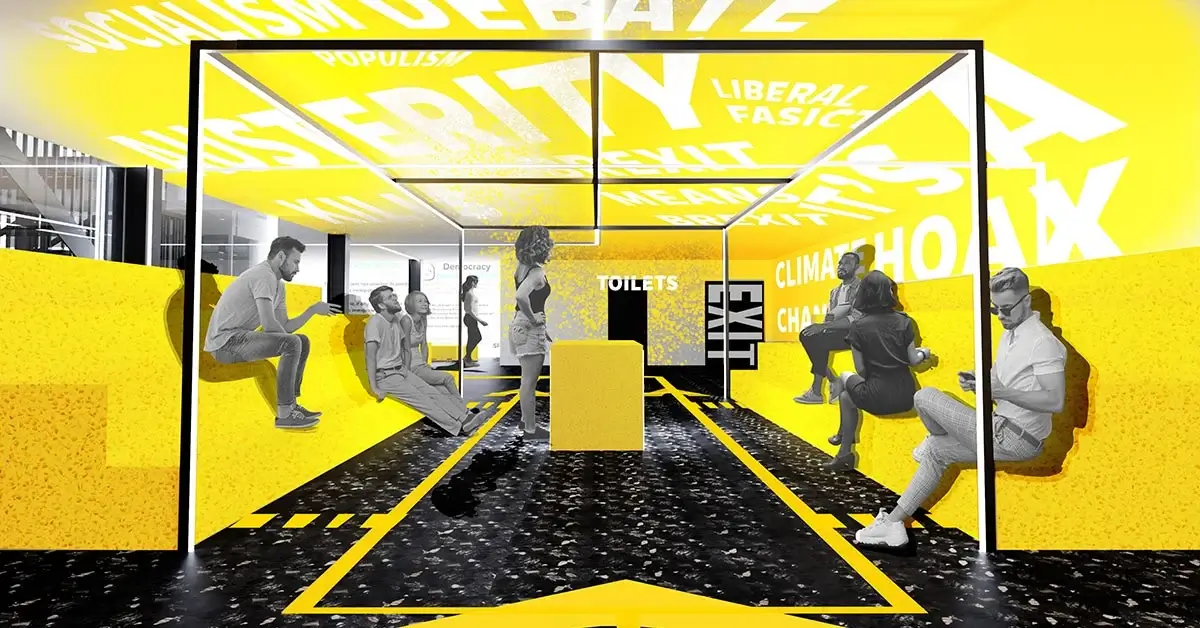
With climate change being such a pressing global issue, there has been a far greater focus on sustainability and ways we can reduce our carbon footprint and wider adverse impacts on our environment and global community.
Like many industries, design has an important part to play in combatting climate change and, as such, there’s a global push for more sustainable practices in the design industry.
Definition of sustainable design
Accounting for almost 40% of energy-related carbon dioxide emissions, buildings and construction have significant negative impacts on our climate, environment and biodiversity. Sustainable design involves designing buildings, cities and infrastructures that seek to reduce these impacts, while creating healthy, safe and comfortable spaces for people using those spaces.
The aim of sustainable design is to create spaces that have a more positive impact on our climate, environment and society.
Sustainable design requires an awareness and in-depth understanding of the role design plays in climate change, environmental impacts and sustainability. It also requires a paradigm shift in thinking, behaviors and approaches when it comes to design.
Why is sustainability important for interior design and architectural interior design?
The urgency of tackling climate change and its adverse impacts on our environment has become increasingly apparent. And with it, so has the need for the design industry to embrace sustainable practices – both now and into the future.
A World Happiness Report on sustainable development and wellbeing found a strong link between sustainable development and self-reported measures of human wellbeing. The Organisation for Economic Co-operation and Development and European Environment Agency, among other international organisations, have also formally recognised the link between sustainability and human health and wellbeing.
In addition to the positive impacts sustainability can have in mitigating climate change and loss of natural habitats and biodiversity, it can evidently also have a positive impact on the wellbeing of individuals and communities worldwide. That’s why addressing design from a sustainability perspective is key when working in interior design or architectural interior design.
Benefits of biophilic design
Biophilic design looks to increase our connectivity to the natural environment. This can be through the use of direct nature, indirect nature, and space and place conditions. It's an innovative way in which designers are reimagining their craft to bring about more of a balance and harmony between modern buildings and architecture and the natural world.
The correlation between nature and green spaces and improved human mental and physical health and wellbeing has been well documented. By embracing a connection to nature in its approach to design, biophilic design paves the way for designers to have a positive impact on the lives of others, as well as on the natural world around us and our connection to it.
Are architects and interior designers committed to sustainable design?
There’s been a major paradigm shift in recent years in how architects and interior designers work, in line with the push towards finding more sustainable ways to develop buildings and spaces.
A growing number of architects and interior designers around the world are rising to the challenge and committing to incorporating more sustainable practices in their work and creating spaces that mitigate the impacts of climate change and improve human wellbeing.
In the UK alone, over 1,200 architectural and interior design practices have declared their commitment to:
- Raising awareness of climate and biodiversity emergencies and the urgent need for action
- Advocating for faster change in the industry in its move towards regenerative design practices
- Establishing climate and biodiversity mitigation principles as key measures of the industry’s success
- Evaluating new projects to align with climate breakdown mitigation
- Collaborating with engineers, clients and contractors to further reduce construction waste
- Accelerating the shift towards low-embodied carbon materials
- Minimising wasteful use of resources in urban planning and architecture
What will you learn about sustainable design with an MA Interior Design?
Whether you’re an existing interior design professional, or a graduate with a related design degree, our MA Interior Design can help you research current and future global sustainability challenges and how to effectively address them.
It can help you learn:
- How to identify and source materials, fixtures and fittings for sustainable wellbeing
- Sustainable design concepts such as biophilic design adopted to deliver net-zero-ready new and existing buildings
- How to re-purpose and reuse existing structures and spaces utilising a sustainable approach
If you want to learn more about sustainable design and how to incorporate it into your design practice, Arts University Bournemouth offers an online MA Interior Design that can help you make your mark in the field as a talented, socially and environmentally-conscious designer:
Featured image credit: Natalia Drezek
Related posts
Passivhaus: The gold standard in energy efficiency
Learn more about Passivhaus-standard building and what criteria constructors need to meet to be...
Read the storyInterior design in educational spaces
Discover how interior design plays a role in educational spaces and the learning experience.
Read the storyHow to become a freelance interior designer
Turn your interior design passion into a freelance career. From portfolios to rates, here's all you...
Read the storyStart your creative journey here.
Want to chat or ask a few questions? Fill this in and we’ll give you a call back.
